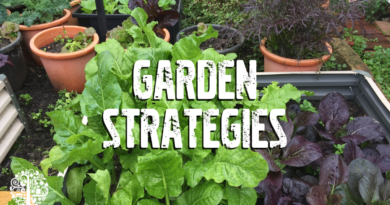Training and Pruning Tomatoes for Bigger Fruit
There’s nothing quite like a ripe, sun-warmed tomato right off the vine. It’s an iconic part of summer. There are more than 10,000 varieties of tomatoes for you to try and you will only ever experience them by growing them yourself. They come in the entire rainbow of colors: red, pink, orange, yellow, purple, black, green, and white. Some are large and beefy, while others are small and bite-sized. Some are grown for fresh eating while others are best for sauces and preserving, which means your tomato harvest can bless you all year.
It is not mandatory to prune tomato plants but if you want to make the most of your harvest, training and pruning them will give you larger, healthier fruit and prevent pests and diseases. There are multiple methods for training tomatoes, and different types of tomatoes need to be pruned and trained differently. Read on to learn how to get your best tomato harvest yet.
Determinate vs. Indeterminate Tomatoes
Tomatoes fall into two main categories: determinate and indeterminate, and each type should be trained differently. Determinate tomatoes are shorter, bushier plants that tend to produce most of their fruit at the same time. Some of the most notable determinate varieties include Roma, Celebrity, Bella Rosa, Patio, and Better Bush. Determinate tomatoes are usually between three to five feet tall and do well both in the ground and in containers. If you prune determinate tomatoes too much, you will reduce your harvest. Lightly thinning them, however, can improve air flow and allow more sunlight to reach your plant, which improves their overall health.
Indeterminate tomatoes are vining and produce fruit throughout the season. They can grow up to 12 feet tall and tend to be prolific. Although you can let them sprawl on the ground, you’ll prevent disease issues by training them up off the ground and pruning them. Pruning excess vegetative growth will allow indeterminate tomatoes to focus their energy on growing fruit instead of leaves and results in fewer, but larger, tomatoes. Some of the most loved indeterminate varieties include Big Boy, Early Girl, San Marzano, Supersweet 100, and Yellow Pear. Most heirloom tomatoes are indeterminate.

Training Tomato Plants
The biggest benefit of staking your tomato plants is preventing pests and disease. When tomatoes lie on the ground, they come into contact with harmful fungi and offer themselves up as a ready-to-eat buffet for harmful insects that live in the soil. Training also makes harvesting easier and makes better use of precious garden space.
There are many types of training techniques, including one stake, two stakes, Florida weave, and caging. Whichever method you choose, be sure your supplies are strong and durable enough to support your tomatoes until the end of the season. Tomatoes can become so large and heavy that one windstorm will knock them over if their support isn’t strong enough.
(Read also: Controlling the Curl: Tomato Leaf Roll)
Using one stake to train your tomatoes is a technique best used on bushy determinate varieties, since vining indeterminate varieties tend to need more support. Metal T-posts work well for this method because they are so strong and durable, but you can also use stakes made out of wood, plastic, or bamboo.
To train your plants on one stake, insert the stake six to 12 inches into the ground within an inch or two of the plant’s base. Once your plant reaches about 10-12 inches in height, loosely tie the stem to the stake using garden twine, twistie ties, or a strip of cloth.

As your tomato grows, continue to tie the stem to the stake about every eight inches or so. If you want added support, you can implement a two-stake system by placing a stake on either side of the plant and securing the plant in the same way as you do in a one-stake system.
I will also add stakes as the plant grows, if necessary. Bamboo stakes work well for this and can be used to open up the canopy to let more sunlight reach the plant. Adding extra bamboo stakes is especially useful with vining tomatoes to keep vines up off the ground as they spread out.
Cages also work well for training tomato plants. Cone-shaped wire cages can be found at most garden centers. They tend to work well until the plants get very large, at which point they may start to tip over. To prevent this, you can purchase extra large cages or make your own cages out of wire fencing. Wrap galvanized livestock fencing with four- to six-inch woven squares around your tomato plant and secure your cage with a stake or landscape fabric staples. This should support your tomato until the end of the season. You can also build a cage out of wood, in either a square or triangle shape, or in a trellis design.
(Read also: How to Trellis Your Plants Properly)
The Florida Weave technique is another effective option for training tomatoes. With this method, plant your tomatoes in a row and place a metal T-post on either side of the row, with a third post in the middle of the row. Tie durable string to one of the end T-posts about two inches from the ground and weave it in and out between each tomato plant. Be sure to wrap the middle T-post for extra support, and then tie it to the T-post at the other end of the row, making sure to keep the string tight. Repeat this every one to two inches up the stakes until the woven string reaches above the tomato plants. As your plants grow more, you can train them by placing them in the next weave.

Pruning Tomato Plants
Determinate and indeterminate tomato plants need to be pruned differently. Determinate tomatoes only need to be thinned a little bit to allow for more air and sunlight to reach the plant. Indeterminate tomatoes, on the other hand, benefit from pruning more of the suckers, which allows them to focus their energy better.
When pruning both types of tomatoes, the first thing you want to do is trim up the lower six to 12 inches of leaves so there aren’t any touching the soil. Sunlight won’t reach these leaves anyway, so they end up being a drain on the plant’s energy. Removing these leaves also reduces the risk of soil splashing up on your plant when it’s raining or you’re watering, which can lead to bacterial and fungal issues.
For determinate varieties, your next step will be to thin all the leaves just enough to let some air and light through, but avoid removing suckers or you will reduce your harvest. You may need to thin your plants a bit throughout the season, but other than that you’re done.

For indeterminate varieties, you’ll focus on removing some of the suckers from your plants. Suckers are a smaller stem that grows at a 45-degree angle between the main trunk and leaves on your plant. Be sure to remove them when they are small, about two to four inches long. If you remove them when they are much larger, you’ll have wasted the plant’s energy and the open wounds are larger and more susceptible to disease.
In northern regions, you can remove all the suckers and let your plants focus more of their energy on growing tomatoes. In warmer regions, it is common to practice what is known as Missouri pruning by pinching the leaflets off the end of each sucker, only leaving two of the base leaflets in place. As the leaves grow, they will shield your tomatoes and prevent sunscald.
Training and pruning your tomato plants can help you grow larger, healthier tomatoes. By following a few simple guidelines, you can grow your most epic tomato harvest yet!




